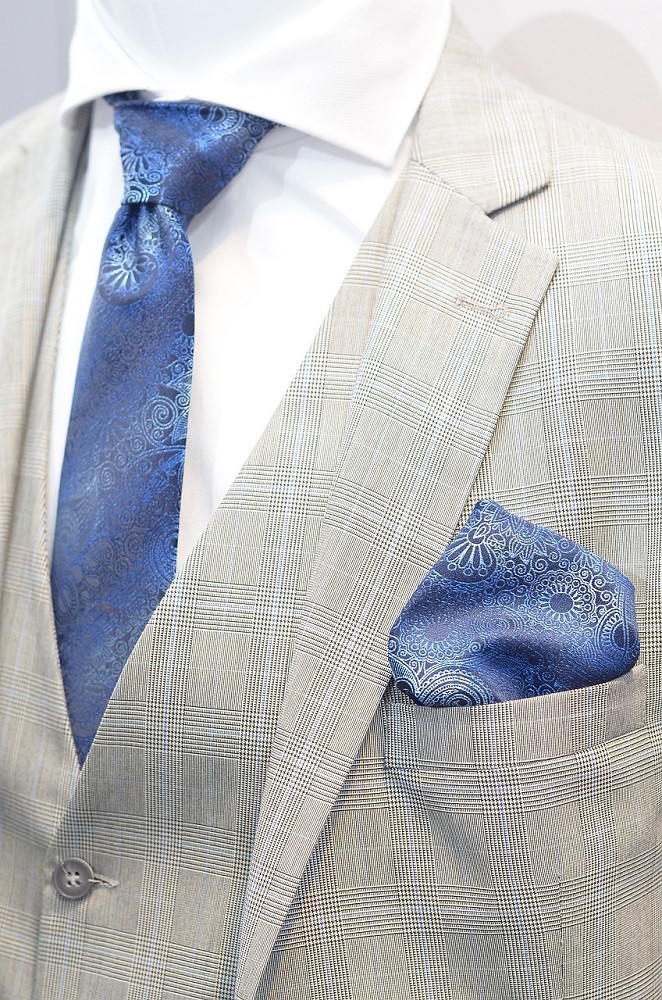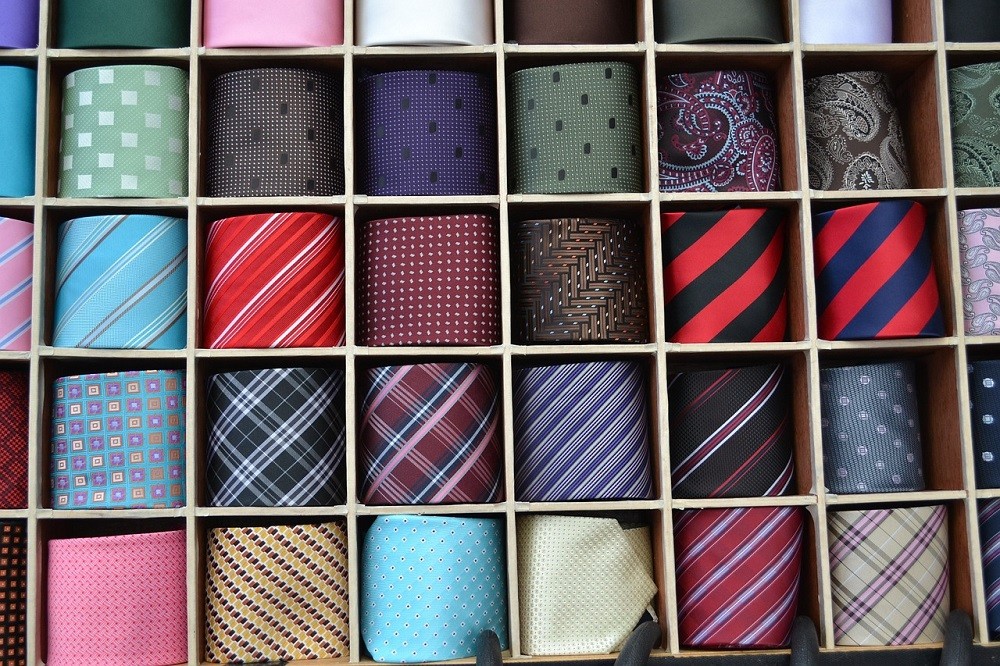The Esteemed Gentleman Articles
Why You Should NEVER Match Your Tie And Pocket Square
Along with buttoning the bottom button of a suit, matching your tie and pocket square is considered a cardinal sin of men's style. Why should you NEVER match your tie and pocket square? It's simple, really: it gives the impression that you don't care or don't know any better.
At some point in your style journey, you've likely heard the advice to match your tie and pocket square. This advice can be misleading since you never want to directly match your tie and pocket square one-to-one. Here's why:
Why Should Your Tie And Pocket Square Not Match?
Matching your tie and pocket square conveys the message that you aren't versed in sartorial style. It's an obvious sign that no attention was given to detail and that your accessories were hastily chosen without mindfulness of the overall outfit.
The matching tie and pocket square gift sets often sold during the holidays and prom season should be avoided like the plague. They are made from cheap materials, created to be worn a couple of times and then disposed of or thrown in a drawer until the next Christmas party.
How Should You Pair Your Tie And Pocket Square?
When it comes to pairing your accessories, it's more of an art than science. Sure, you need to have a basic understanding of colour theory, which you can read all about in our article A Beginner's Guide To The Colour Wheel, but it ultimately comes down to the outfit you want to create.
For beginners, it's best to pick a secondary or tertiary colour from either your tie or pocket square and make it the main colour in the other. You can choose any pattern and design for your bolder accessory but be aware of the level of formality. Your other accessory should be either a single colour or small repeating pattern.
Don't make both accessories overly colourful or busy; it will throw off the look and make you appear as though you're trying too hard. Avoid bright colours like neon greens and hot pinks unless you're going for a casual or flamboyant look.
For more formal events, stick to darker or neutral colours like dark purples, blues, greens, burgundy, brown, and charcoal (never go with just black). Patterns like polka dots, stripes, and paisley designs can be used, as long as they aren't too busy.
When in doubt, go with a plain white pocket square. It will match with pretty much anything!
What About Other Types Of Neckwear Like Bow Ties And Ascots?
The matching rule applies to all neckwear except scarves (which are easily removed and are therefore not considered a permanent piece of an outfit). Although not as common as matching tie and pocket square gift sets, matching bow tie and pocket square gift sets do exist. Avoid these as well.
If you want to add a bow tie or ascot to your ensemble, it will likely be your statement piece, since both bow ties and ascots are both less formal and less common than ties, making them stand out much more.
For more information on types of neckwear, please read our Ultimate Neckwear Guide for ideas, inspiration, and style tips!
What About Handkerchiefs? Are They The Same As Pocket Squares?
The terms 'handkerchief' and 'pocket square' are sometimes used interchangeably but there are some key differences. We wrote an entire article that discusses the Differences Between A Pocket Square And Handkerchief that goes into much more detail. For the sake of brevity, pocket squares are usually made from delicate fabrics and have patterns where handkerchiefs are made from thicker fabrics and are usually plain.
What If You Receive A Matching Set As A Gift?
If you are the recipient of a matching tie and pocket square gift set, the humble thing to do is accept the gift and remember that it's the thought that counts. That doesn't mean you don't wear the pieces ever, but break them up and wear them with other accessories in your wardrobe.
If the pieces are too tacky or don't fit your aesthetic, reserve them for occasions when you will be with the person that gifted it to you. Whether you want to wear them together or just wear one piece at a time, paired with something else, is up to you. For instances like this, the sentimental value outweighs the style rule.
Should You Correct Or Call Someone Out For Wearing A Matching Tie And Pocket Square?
You may come across someone wearing a matching tie and pocket square and feel the urge to tell them that they're committing a big no-no. You may want to share your newfound sartorial knowledge with them at that moment, but you should bite your tongue.
Rather than embarrassing them in front of peers, wait until you are with them one-on-one or until after the event. Alternatively, you don't have to tell them at all. Maybe they don't dress up very often or aren't interested in the rules of menswear.
Some people just aren't interested, and that's okay. There's no need to stand on a soapbox and tell them what they don't want to hear. They likely won't want to listen. But if they are open to advice, you can become their mentor and help them discover their style.
Summary
Your overall outfit should be harmonious. Adding pops of colour and textures in your accessories by using different patterns and fabrics will enhance your appearance and show others that you are attentive to details when it comes to menswear.
When you subscribe to the article, we will send you an e-mail when there are new updates on the site so you wouldn't miss them.









Comments